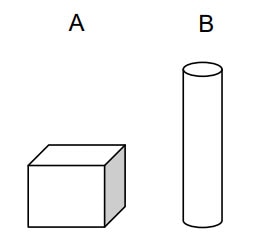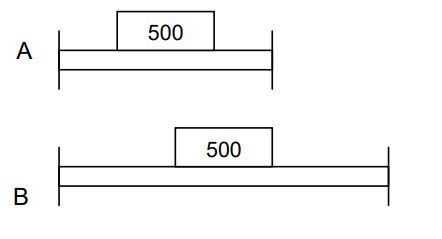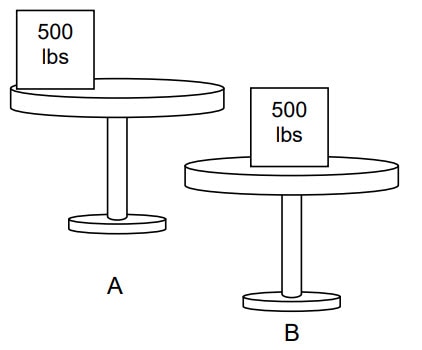SAMPLE QUESTIONS: SKILLED CRAFT BATTERY TEST
ENGINEERING & TELECOM
Workplace Practices Instructions
This section contains sample items for the Workplace Practices Test. The items contained in this section are meant to provide you with an idea of what to expect when taking the Workplace Practices Test.
This test has two sub-sections. Both sections include questions that describe peoples' attitudes about themselves and their work. Please answer each question in a way that best describes your own experiences, judgments, and opinions. It is very important that you answer each item honestly and as accurately as possible. There are no right or wrong answers to this test.
In the first section you are asked to read each statement, then decide whether you agree or disagree with what it says, and select your answer.
Section two contains two types of questions. Some questions ask you about work practices. Other questions describe a situation and ask you what you would do. Read each question and choose the one answer that most accurately reflects your opinion. For some questions, more than one answer may seem appropriate. In these instances, choose the one answer that most accurately reflects your opinion.
Section 1 Sample Question: I'm flexible and open to change.
- Strongly agree
- Somewhat agree
- Somewhat disagree
- Strongly disagree
Section 2 Sample Question: How would you describe your attitude toward safety rules on the job?
- Some safety rules actually slow work down
- Some are more important than others
- If you're careful, you'll never need them
- I'm glad that companies insist on them
- A lot of safety rules could be eliminated
Workplace Practices Instructions
This section contains sample items for the Workplace Practices Test. The items contained in this section are meant to provide you with an idea of what to expect when taking the Workplace Practices Test.
This test has two sub-sections. Both sections include questions that describe peoples' attitudes about themselves and their work. Please answer each question in a way that best describes your own experiences, judgments, and opinions. It is very important that you answer each item honestly and as accurately as possible. There are no right or wrong answers to this test.
In the first section you are asked to read each statement, then decide whether you agree or disagree with what it says, and select your answer.
Section two contains two types of questions. Some questions ask you about work practices. Other questions describe a situation and ask you what you would do. Read each question and choose the one answer that most accurately reflects your opinion. For some questions, more than one answer may seem appropriate. In these instances, choose the one answer that most accurately reflects your opinion.
Section 1 Sample Question: I'm flexible and open to change.
- Strongly agree
- Somewhat agree
- Somewhat disagree
- Strongly disagree
Section 2 Sample Question: How would you describe your attitude toward safety rules on the job?
- Some safety rules actually slow work down
- Some are more important than others
- If you're careful, you'll never need them
- I'm glad that companies insist on them
- A lot of safety rules could be eliminated
Arithmetic Computations Instructions
This section contains sample items for the Arithmetic Computations Test. The items contained in this section are meant to provide you with an idea of what to expect when taking the Arithmetic Computations Test.
This is a test of your ability to solve arithmetic problems. This test will ask you to perform general arithmetic computations (addition, subtraction, multiplication, and division) for test questions involving whole numbers, fractions, decimals and percentages. You may use a calculator and/or scratch paper when solving the problems on the test.
When completing this test, you will need to work quickly and accurately to complete as many items as possible. Your score is based on the total number of items you answer correctly.
Example Questions:
- 3% of 300 =
- 9
- 33
- 39
- 90
- Other
- 640 ÷ 25 =
- 22
- 24
- 25.5
- 26.5
- Other
- 6/9 of 54 =
- 36
- 54/9
- 81
- 324
- Other
Arithmetic Computations Instructions
This section contains sample items for the Arithmetic Computations Test. The items contained in this section are meant to provide you with an idea of what to expect when taking the Arithmetic Computations Test.
This is a test of your ability to solve arithmetic problems. This test will ask you to perform general arithmetic computations (addition, subtraction, multiplication, and division) for test questions involving whole numbers, fractions, decimals and percentages. You may use a calculator and/or scratch paper when solving the problems on the test.
When completing this test, you will need to work quickly and accurately to complete as many items as possible. Your score is based on the total number of items you answer correctly.
Example Questions:
- 3% of 300 =
- 9
- 33
- 39
- 90
- Other
- 640 ÷ 25 =
- 22
- 24
- 25.5
- 26.5
- Other
- 6/9 of 54 =
- 36
- 54/9
- 81
- 324
- Other
Mechanical Comprehension Instructions
This section contains sample items for the Mechanical Comprehension Test. The items contained in this section are meant to provide you with an idea of what to expect when taking the Mechanical Comprehension Test.
This is a test of your ability to solve problems that involve mechanical principles and problems. The test contains questions that show you an illustration of a practical problem, and ask you to determine the correct answer. Use your experience and judgment to choose the answer you think is best.
For sample questions 1-3, examine the pictures to the right of each question.
Mechanical Comprehension Instructions
This section contains sample items for the Mechanical Comprehension Test. The items contained in this section are meant to provide you with an idea of what to expect when taking the Mechanical Comprehension Test.
This is a test of your ability to solve problems that involve mechanical principles and problems. The test contains questions that show you an illustration of a practical problem, and ask you to determine the correct answer. Use your experience and judgment to choose the answer you think is best.
For sample questions 1-3, examine the pictures to the right of each question.
-

1. Which of the following two objects would be easier to tip over, assuming that both are made of the same material and weigh the same? (If no difference, mark C.)
[Answer is B]
Option A is an image of a cube, Option B is a tall cylinder
-

1. Which of the following two objects would be easier to tip over, assuming that both are made of the same material and weigh the same? (If no difference, mark C.)
[Answer is B]
Option A is an image of a cube, Option B is a tall cylinder
-

2. Which beam is more likely to break, assuming that both beams are of equal thickness and are made of the same material? (If no difference, mark C.)
[Answer is B]
Option A is a shorter beam with a weight in the middle, Option be is a wider beam with a weight in the middle
-

2. Which beam is more likely to break, assuming that both beams are of equal thickness and are made of the same material? (If no difference, mark C.)
[Answer is B]
Option A is a shorter beam with a weight in the middle, Option be is a wider beam with a weight in the middle
-

3. Which table is more likely to tip over, assuming that both tables are made of the same material, are the same size, and weigh the same? (If no difference, mark C.)
[Answer is A]
Option A is a round table with a box to the left side, Option B is a round table with a box in the middle
-

3. Which table is more likely to tip over, assuming that both tables are made of the same material, are the same size, and weigh the same? (If no difference, mark C.)
[Answer is A]
Option A is a round table with a box to the left side, Option B is a round table with a box in the middle
ADEPT-15
The third component, ADEPT-15, measures 15 aspects of individuals’ personality linked to effective work performance. It has been proven effective in selection, promotion, and development contexts by over 8 million global administrations, is backed by 50 years of research, and is built upon a database of 350,000 unique items.
Instructions
This assessment is composed of pairs of statements. You simply need to indicate which one you agree with more. The closer you move the selector towards a statement indicates a greater level of agreement with that statement than the other. For each pair of statements, you must move the selector left or right, you cannot leave it in the middle. If you change your mind, simply move the selector to another location or click the new location. There will be five pairs of statements on each screen.
At times, it may be hard to choose because you agree or disagree with both statements. This is a normal part of the assessment. When faced with this type of choice, you should review each statement and then move the selector closer to the one you agree with slightly more.
You should be careful not to over-think your responses; you should go with your first reaction whenever possible.
There are a total of 100 statement pairs on the assessment. An example of a real item pair can be seen below.
ADEPT-15
The third component, ADEPT-15, measures 15 aspects of individuals’ personality linked to effective work performance. It has been proven effective in selection, promotion, and development contexts by over 8 million global administrations, is backed by 50 years of research, and is built upon a database of 350,000 unique items.
Instructions
This assessment is composed of pairs of statements. You simply need to indicate which one you agree with more. The closer you move the selector towards a statement indicates a greater level of agreement with that statement than the other. For each pair of statements, you must move the selector left or right, you cannot leave it in the middle. If you change your mind, simply move the selector to another location or click the new location. There will be five pairs of statements on each screen.
At times, it may be hard to choose because you agree or disagree with both statements. This is a normal part of the assessment. When faced with this type of choice, you should review each statement and then move the selector closer to the one you agree with slightly more.
You should be careful not to over-think your responses; you should go with your first reaction whenever possible.
There are a total of 100 statement pairs on the assessment. An example of a real item pair can be seen below.


